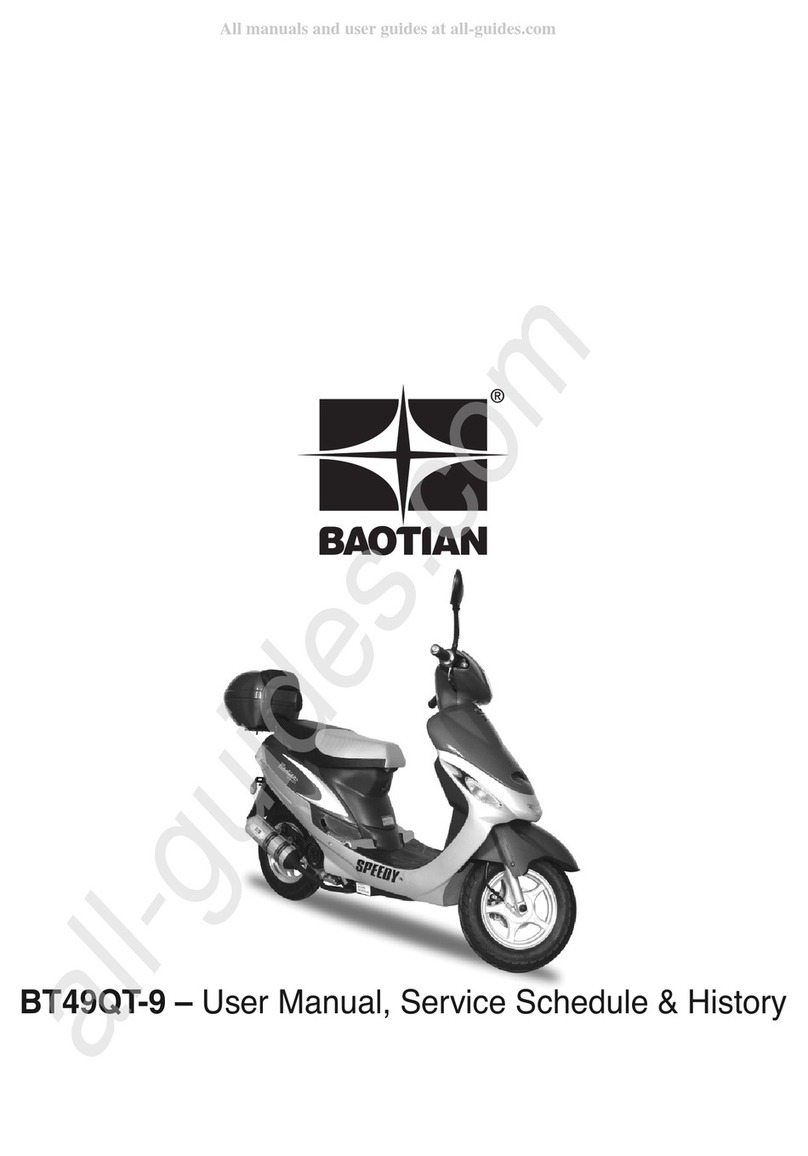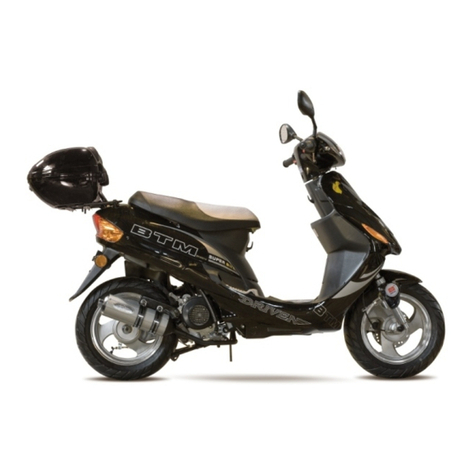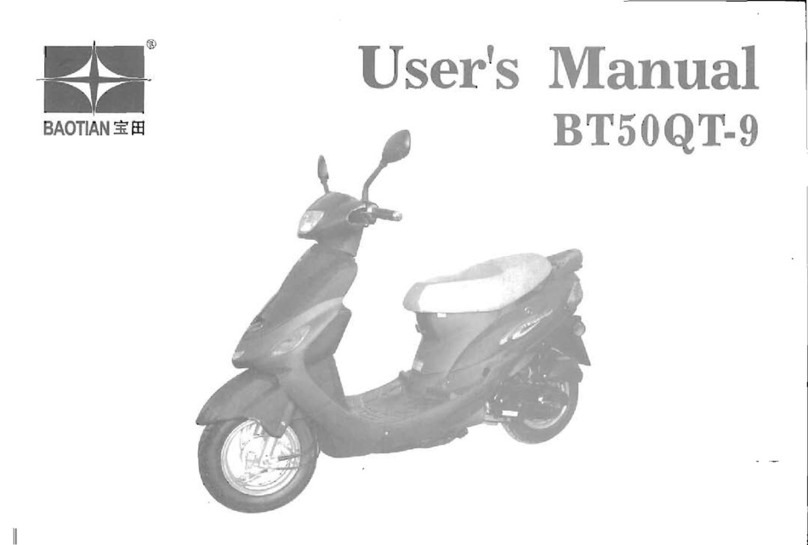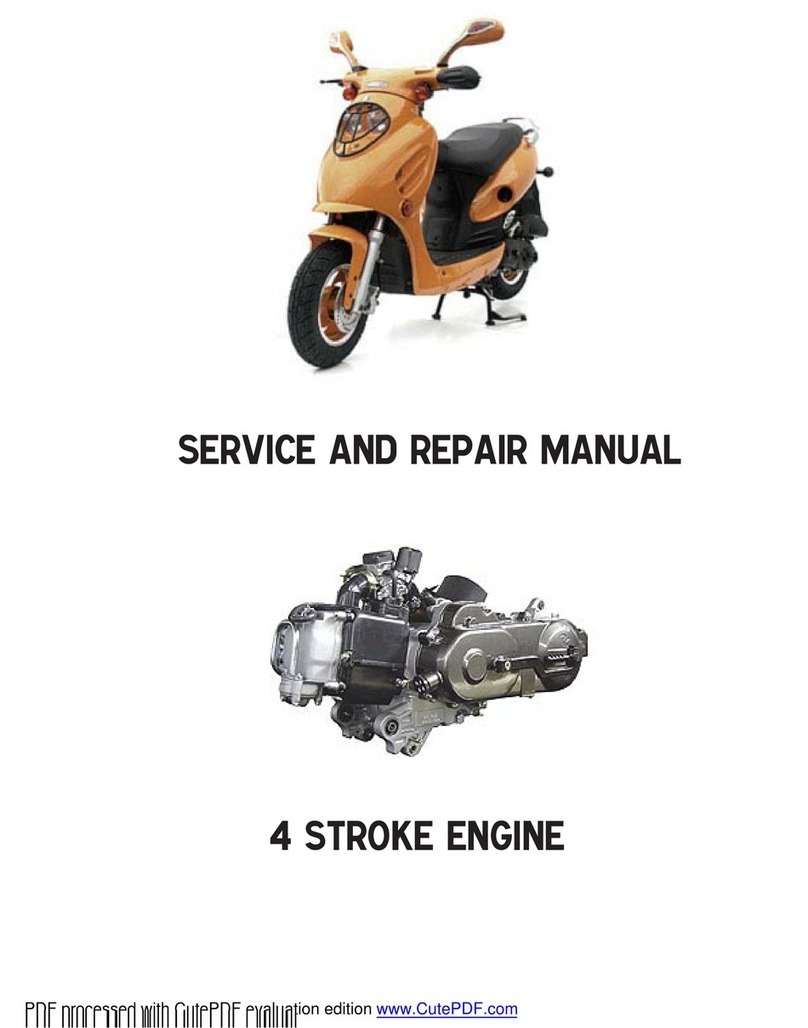1
CHAPTER ONE MAINTENANCE OF THE MOTORCYCLE
. ITEMS OF MAINTENANCE
When the motorcycle is used, loosening of parts and mechanical wear inevitably occur to varied
extents. Neglect of timely maintenance not only reduces its mechanical function, economic
performance, stability and durability, but also threatens the safety of the motorcycle and the rider.
Correct and timely maintenance of the motorcycle is a must. Items of maintenance refer to the
parts and positions for maintenance. Different items of maintenance are effected at different
intervals and in different manners.
1. Running-in Maintenance
This is the maintenance at the end of the first 1000km and is an all-round inspection of the
motorcycle. Anewly-bought motorcycle or a motorcycle fresh from an overhaul might be severely
overheated as a result of severe friction between the moving parts which might be imperfect in
finishing or fitting. Neglect in use might lead to damage of the friction surfaces and might threaten
the performance, and the service life, of the motorcycle. Please observe the following points:
Restrict the speed in speed range specified in the instruction manual.
Restrict the load to 2/3 of the maximum load and ride in fairlygood road conditions.
Restrict the length of riding time to avoid long-time running of the engine.
Replace engine oil at short intervals so that metal chips caused in the running-in period can
be discharged. It is recommended to replace engine oil for 3 times during the running-in
period.
2. Routine Maintenance
Routine maintenance is the basis of all kinds of maintenances. It refers to the daily maintenance,
including cleaning, inspection and common troubleshooting.
3. Periodic Maintenance
This maintenance is to restore normal performance of the motorcycle. The maintenance is
classified into first-grade periodic technical maintenance and second-grade periodic technical
maintenance (also known as items of maintenance) according to different mileages. Generally
speaking, a first-grade maintenance is effected after the initial 4000km and a second-grade
maintenance is effected every 8000km. As the service time extends, maintenance intervals should
be shortened accordingly.
. PERIODIC MAINTENANCE SCHEDULE AND MAINTENANCE LOCATIONS
After a period of use (one day, one month or half a year, for example) or a certain mileage
(1000km, 4000km, 8000km, for example), an all-round maintenance operation should be effected,
including comprehensive inspection, adjustment, tightening, lubrication, cleaning or replacement.
The specific regulation made according to time intervals or mileages is known as maintenance
interval. The motorcycle maintenance schedule is as follows.
1. Maintenance Schedule




































